Travel to Ethiopia-Ethiopia Combined-Omo Valley, Bale Park, Northern, Denakil Depression 32D +
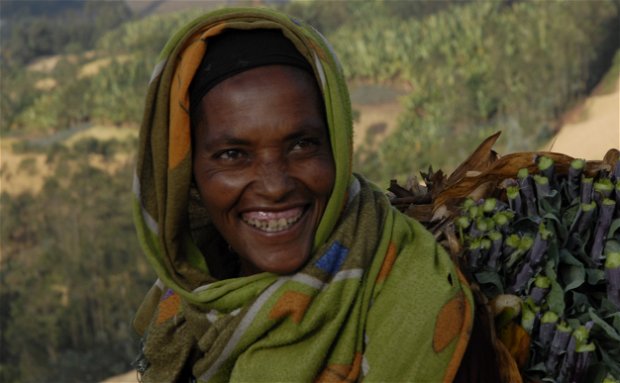
Meet the people of Southern Ethiopia on this unique cultural tour, which combines genuine cultural experiences with high quality accommodation.
The tour takes you south-Eastern Part to Bale Park for its incredible vegetation and wild life. Then connected to experience the cultural diversity and beauty at Omo Valley- the paradise for Photographers. The trip has extension to the Northern Historic route to enjoy the simien Park and have a glimpse of the Royal history of Ethiopia and the churches.
The Omo valley is dominated mainly by many ethnic groups who speak omotic language as classified by linguistics. The region and the people of this area are one of the least affected by the modern world. The life style of these people has hardly changed for centuries. People still live in simple make shift huts, dress animal skins and drink from calabashes. The area is a veritable paradise for photographers and naturalists.
The people of the Omo Valley and their culture have been a source of fascination for travelers for many years. The Hammar or Hamer, who are well known for their sense of elegance, are the major ethnic group in the region. The Surma and Mursi women, who wear lip plates by piercing their lower lip have been compelling tourists to travel to their land to see what seems impossible.
You will meet these people in their own homeland and you will be their guests in their daily lives.
This tour is only available between July and the end of March. It is suitable for all age groups.
Travel to Ethiopia-Ethiopia Combined: Omo Valley, Bale Park, North Ethiopia and Dallol
Day 1
Drive to LanganoDay 2
LANGANO/BALE MOUNTAIN NATIONAL PARKLeave Langano for the drive via Shashemene- the settlement/the promise land for Ras Teferian community- destined to Bale Mountain National Park. The Park is the land of endemism where everyone can spot 3 endemic animals of Ethiopia namely, Mountain Nyala, Menelik’s Bush Buck and Ethiopian Wolf. Before arrival at the national park, you have a chance to spot some animals including Gazells, Warthogs and Olive baboon, and Reed Buck around the Gaysay Park. Head to Goba for overnight stay. O/N. Goba Wabishebelle Hotel
Day 3
Senate Platou, Simien Fox and Harena ForestExperience the highest point of the region and the second highest mountain in Ethiopia named Tullu Dimitu for its 4,377 meters altitude. Enjoy with the surrounding Afro Alpine vegetation and small Afro alpine lakes-home for so many beautiful migrant birds from Europe. Senate Plateau area is the largest Afro alpine vegetation in Africa vegetated by highland plants and shrubs like the endemic Giant Lobelia and Everlastings. The landscape is one of the very few best places to spot an endemic and rare Ethiopian Wolf/Simien Fox. Drive further to enjoy at the amazing dense forest of Harena. Back to the hotel. O/N. Goba Wabishebelle Hotel
Day 4
Bale to YirgalemEarly morning, drive to Dinsho –head quarter for the park. Make few walking in the part for the second photo shoot of the animals. Drive to Yirgalem, where you stay in the beautiful lodge at Aregash Lodge. You will enjoy the beauty of the lodge which was built by the design of the hut of Sidama people. Overnight at the Lodge
Day 5
Yirgalem to AwassaDay 6
AWASA FISH MARKET & BIRDS/ARBA MINCH.After breakfast, Visit the fish market in Lake Awassa for bird species. Head to ArbaMinch through the rolling hillsides of Wolaitta. After Sodo turn south, and skirt the western shores of Lakes Abay and Chamo, the southernmost of Ethiopia’s Rift Valley Lakes, before arriving in Arba Minch, or “40 springs”. Check into the Paradise Lodge. The hotel is situated on a hill overlooking the narrow stretch of forested land, known locally as “the bridge of heaven”, which separates the two lakes. Lunch at your hotel and let afternoon you will enjoy the boat trip on Lake Chamo. The attraction of the boat trip includes viewing of a large number of hippos and crocodiles from a very close range. Overnight Hotel/Resort.
Day 7
ARBA MINCH. (DORZE VILLAGE)After breakfast, we drive to Chencha, to participate in the weekly market of the Dorze .The home of the Dorze people, renowned cotton weavers whose tall beehive- shaped dwellings are among the most distinctive traditional structures to be seen anywhere in Africa. The main occupations of the region are subsistence farming and weaving. The Shema cloth produced around Chencha is regarded to be the finest in Ethiopia: plain white ‘Gabbi’ robes and brightly colored scarf- like ‘Netalas’ are sold along the roadside. Lunch in Chencha at a Local restaurant. After lunch, visit the house of Dorze society which is very tall house measures from 7-11 m in height. It is made of bamboo and the interior section consists of fireplace, bedroom, store, guests sit, and room for keeping small cattle. In addition to the impressive main house, one can see a special house for honeymoon. The garden is also rich of false banana (enset) plant. Overnight at Lodge.
Day 8
JINKA(KONSO, BENA, TESEMAY & ARI TRIBES)Arba Minch to Konso to Jinka. Drive to Konso, which is about 96km from Arba Minch. Continue Driving to Jinka (160 Km, 4 hours) via Woito and Key Afer, about 200km. Make a drive through Woito village and then to Key Afer. Visit the Benna tribes which are neighbors with the Hamer tribe and it is believed that the Bena actually originated from them centuries ago. And finally proceed to Jinka. Overnight at local Hotel
Day 9
MAGO PARK, MURSI THEN TO TURMIJinka to Mago National Park to Mursi to Jinka After breakfast drive to Mago National park; in the park you may see the following animals Bushbuck, Dik Dik, Baboons and Colobus Monkeys. Then drive to Mursi tribe is known by body scarification and (among the women) the wearing of lip plates. They are settled around the Omo River and in the Mago National Park. Due to the climate, they move twice a year between the winter and summer months. They herd cattle and grow crops along the banks of the Omo River. Return back to Jinka for Lunch, after lunch visit the South Omo Museum & the Research Center for more information about the tribes. If time permits, visit Ari Villages which have neat compounds infertile and scenic land with coffee plantations. They have large livestock herds and produce large quantities of honey. The women wear skirts from the banana like a tree, called “Enset”. Ari women are famous for their pottery which they sell to support their families. Keep driving to Turmi via Key Afer and Dimeka, about127kms on the way, stop in Key Afer for the local market, which is on Thursday, and the most colorful markets in the South Omo and is visited by neighborhood Hamer, Benna, Tsemai and Ari tribes. Proceed to Turmi via Dimaka by enjoying the Hamer tribes. Overnight Turmi Lodge/Similar.
Day 10
KARA TRIBES AND DASSENECH TRIBESWe drive to Omorate, it is about 35km, cross the Omo River by Canoe and visits the Dasenech villages (Galeb tribe) then drive back to Turmi. In the afternoon visit the Hamer village. The Hamer are a fine looking people, both men and women take great pride in their appearance, shaving and colouring their hair, oiling their bodies and decorating themselves with beads and bracelets worn around the arms and legs. Afternoon drive to Muruelle, it is about 67km; visit the Duss and Korcho villages of the Karo people. They are considered masters of body painting, in which they engage when preparing for a dance, feast, or celebration. Overnight Turmi Lodge/Similar.
Day 11
TURMI/DIMAKA TO KONSO(UNESCO’s WORLD HERITAGE)After breakfast and market at Dimeka (Tuesday/Saturday) or Turmi Market(Monday/Saturday), we drive back to Konso. On the way we spend some time at a small village called Dimaka, where the weekly market was underway. While there was some comparison with the market, we had visited a few days earlier, this was fairly different, with a lower diversity of attending tribes (only Hammer and Banna live close enough to attend) and a different selection of wares on offer. Besides all the various grains and hair-colouring soils there were decorated calabashes and traditional musical instruments vying for space with various skins and jewellery, as well as many more modern plastic objects like buckets and brooms. Tribes and see their dressing styles, houses and way of living. Proceed to Konso. The Konso people are known for their intricately terraced hillsides, fine woven materials and the carved totems with which they decorate their graves. Enjoy the terrace they make recognized and prized by UNESCO. In addition to this it is worth exploring their village, traditionally the konso live in congested centralized settlements, typically situated on the top of a hill and enclosed by stone walls measuring up to 2m high. These walled hilltop settlements usually have no more than three or four entrance gates, and can be reached only via a limited number of steep footpaths. Overnight at Kanta Lodge or Similar
Day 12
KONSO TO BUTAJIRALeave Konso for the drive to Butajira via Gurage region. Enjoy the surrounding landscape vegetated with false banana trees. Lunch break in Welaita. Late in the afternoon, you will be in Butajira. Overnight at Local Hotel/Similar
Day 13
TIYA STELLA FIELD (WORLD HERITAGE-1980) & FLY TO BAHIR DARDrive back to Addis Abeba. Enjoy the surrounding countryside. Visit also Tiya Stelae field, the archaeological site contains 36 monuments, which includes 32 carved stelae covered with symbols hard to decrypt. Field is a further 30km down the road. Take late afternoon flight to Bahir Dar. O/N. Hotel
Day 14
BLUE NILE FALLS AND ISLAND MONASTERIESTransfer to airport to catch your domestic flight to Bahir Dar. We set out on a boat excursion of Ethiopia’s largest lake. Some 20 of the 37 islands in the lake have monasteries build on them; we visit two churches on Zeghe peninsula- the church of Ura Kidane Meheret. Time allows, we’ll visit the Church of Azewa Mariam. Cruise back to Bahir dar: Before arriving there, you will see the exit of Blue Nile River from Lake Tana. After lunch break, make a tour of Bahir Dar City including Bezawit Hill and its palace built by His Emperor Majesty Hale Silassie. From the Hill, you will see the view of Bahir town, Lake Tana, Blue Nile River and the Islands. In down town, you will visit the colorful market of Bahir Dar including Basket and spices section. O/N. Hotel
Day 15
DRIVE TO LALIBELA-WORLD HERITAGE SITETake a morning drive to Lalibela On the way, visit the Awuramba community-the only community where there is no beggar, no thieves, and no any gender differentiation. Lunch break on your way. Late in the afternoon, you will e in Lalibela. In his youth, King Lalibela was attracted to the monastic life and later made a pilgrimage to Jerusalem. After he came to power, he had these amazing churches created without using mortar and wood. Elaborately carved into solid rock, they were all completed in just a 23-years span. The largest, Bete Medhani Alem, is 100 feet long, 70 feet wide, 35 feet high, and has walls that are up to six feet thick. Its basilica has five naives. This particular church is thought to be a copy of the great cathedral of Saint Mary of Zion built in the Ethiopian city of Axum in the 4th century. There are no less than 1,000 churches in the Lasta region of Lalibela, some hidden in enormous caves. Explore the world-renowned wonders of the Rock-hewn churches of Lalibela; which were constructed by King Lalibela and his successors during 12th and 13th century. O/N. Local hotel
Day 16
1st GROUP OF LALIBELA CHURCHES & YEMEREHANE KIRSTOS CHURCH-WORLD HERITAGEThis morning we transfer to the airport for the flight to Lalibela. On arrival, drive to the site where we find a concentration of some of Ethiopia’s famous rock-hewn churches, built in the 12th century and attributed to King Lalibela. In his youth, King Lalibela was attracted to the monastic life and later made a pilgrimage to Jerusalem. After he came to power, he had these amazing churches created without using mortar and wood. Elaborately carved into solid rock, they were all completed in just a 23-years span. The largest, Bete Medhani Alem, is 100 feet long, 70 feet wide, 35 feet high, and has walls that are up to six feet thick. Its basilica has five naives. This particular church is thought to be a copy of the great cathedral of Saint Mary of Zion built in the Ethiopian city of Axum in the 4th century. There are no less than 1,000 churches in the Lasta region of Lalibela, some hidden in enormous caves. Explore the world-renowned wonders of the Rock-hewn churches of Lalibela; which were constructed by King Lalibela and his successors during 12th and 13th century. For today, we’ll visit the first group of the churches. Head to visit the Cave churches of Yemerehane Kirstos which is located at the outskirts of Lalibela. O/N. Local Hotel
Day 17
ASHETON MARIAM & 2nd GROUP OF LALIBELA CHURCHES WITH ST GIORGE CHURCHAfter an early breakfast, Mule ride to visit the church of Asheton Mariam set on the top of the mountain where you can get also the best view of Roha/Lalibela town. After lunch, visit the second groups of the churches and the last church having crossed shaped, considered to be the third group-The Church of St. George. Lalibela is registered by UNESCO under World Heritage Sites. O/N. Local Hotel
Day 18
FLY TO GONDERTake a flight to Gonder,the capital city of Ethiopia for more than 250 years. Founded by Emperor Fasilades in the 17th century, this historical city has been called the “Camelot of Africa”- visit the entire Castle compound. After check in and lunch break, we explore the Palace compound and the bathing pool of Emeror Fasil. We also visit the Debre Birhan Selassie Church, famous for its “winged angel” faces that decorate the entire ceiling. O/N. Hotel
Day 19
GONDER TO SIMIEN PARKHead to Simien Mountains to reach the small village of Debark. The roads here are very tough, but we are rewarded with more truly breathtaking scenery! Debark is the gateway to the Simien Mountains NP, and on arrival we will have a briefing from our local mountain guide explaining the various trekking options that we will have during our excursion starting the following day.
Day 20
SIMIEN MOUNTAIN (WORLD HERITAGE-1978)Simien park is home to some of Africa's most jaw-dropping mountain scenery and is a great opportunity to enjoy some incredibly beautiful treks and breathtaking views! The area is also home many indigenous animals, and during our time here we hope to spot Lammergeyer vultures, geladas, Walia ibex, and (if we are very lucky) klipspringers and Ethiopian wolves. We will spend 2 nights in the incredible Simien Mountains NP. On each day we aim to provide an option for a long trek (of 5-8 hours), a short trek (2-5 hours) or no trekking. Please note that we must keep a flexible itinerary in the Simien Mountains, as our options will largely be determined by the weather. Please also note that the camping areas in the NP are very basic, and are essentially wild camps with long drop toilets. Please also note that the food and provisions available in Debark and the NP are very limited, and it is also likely to be very cold at night (often dropping below freezing), so please be prepared! You will need to bring a suitable sleeping bag and mat with you from home to ensure you are ready for this environment.
Day 21
SIMIEN PARK TO AXUM& ITS OBELISK (WORLD HERITAGE-1980)Take your amazing experience of the national park and start driving to Axum via the beautiful and scenic road of Limalimo. Late in the afternoon, you will be in Axum, the capital of the once-mighty Axumite Empire until the end of 9th Century. Up on arrival, we’ll explore the historical city of Axum that includes the Stelae Field, the Tomb of King Kaleb, and the Palace of the Queen of Sheba. We will have a free afternoon to make optional visits to other places such as the Church of St. Mary of Zion, the supposed resting place of the Ark of the Covenant. Overnight in Hotel.
Day 22
EXPLORING AXUMAfter breakfast, we make a visit to the churches of St. Mary of Zion, which, according to Ethiopian legend, houses of the Ark of the Covenant in a special chapel. Axum’s claim to be the resting place of the Ark of the Covenant is connected to the legend of the Queen of Sheba and King Solomon, whose son Menelik is said to have brought the Ark here some 3000 years ago(Menelik founded the Solomonic dynasty, of which Haile Silassie wasbelieved to be the last Emperor). In 331 AD, Ezana, the Axumite King, was converted to Christianity by the Syrian monk Frumentius, and the first church structure was built in Axum at that time. There are actually two churches existing today, the older constructed in the early 17th century and containing the crowns of many former Ethiopian rulers. The newly church was constructed by Emperor Haile Silassie, who opened it as a ceremony with Queen Elizabeth in 1965.
North of the town square stand Axum’s famous monolithic stale, or obelisk, carved from single pieces of granite and are decorated with carved doors and windows. Keep on you visiting of the tombs of King Remhay (in the stale compound), the tombs of King Kaleb and King Gebre Meskal. While we’re in Axum, we also visit the impressive ruins of the Queen of Sheba’s palace, set on the outskirts of the town.
Day 23
ADWA MOUNTAINS, YEHA TEMPLE & DEBRE DAMO MONASTERYDrive further to the north-east through the most historical mountains-Adwa Mountains, in which that The Italy soldiers were defeated in 1896. Visit the 5th BC pre-Christian city of Yeha and beautifully built up temple of Yeha. Also Visit the 6th century monastery called-Debre Damo where you can see the typical Axumite architectural design which is recession and projection of walls and wooden and stone wall construction with blind-eye (monkey head style). This monastery is accessible only using leather made robe. It is prohibited for women. Keep driving further to get your lunch/coffee break at Gheralta, the other main city in Tigray region. Late in the afternoon, you will be in Awuzien-Gheralta Lodge. O/N. Local Hotel
Day 24
THE ROCK CHURCHES OF MARIAM KORKORAfter breakfast, you’ll drive to the foot of the beautiful mountains of Gheralta that is the sancruary of the Gheralta cluster of Tigray Rock Churchs. After we drive to the foot of the mountain, we hike to the top to visit the beautiful churches of Mariam Korkor. From the top, you’ll enjoy the beauty of the lowland area. O/N. Hotel
Day 25
THE ROCK CHURCHES OF ABREHA –ATSEBEHA & WUKRO CHERKOS, NEGASH MOSQUELeave your lodge for the visit of the 4th century Rock churches of Abreha –Atsebeha set at small cliff close to the road. Keep driving for 10km to visit the Negash Mosque. Negash is the first Muslim settlement in Ethiopia(even in Africa) soil, granted to more than 100 early Islamic Refugees(Including Muhammed’s daughter Rukiya and his future wives Uma Habiba and Uma Salama) by the Axumite Christian Emperor in 615 AD. The Ethiopian Muslims regard it as the most Holy Islamic town after Mecca. Lunch and coffee break in Wukro. Visit another beautiful Tigray Rock church called Wukro Cherkos. Parts of both churches had been destroyed by Yodit Gudit and Gragn Mohammed in the 10th & 15th century respectively. Drive to Mekele for overnight stay. O/N. Hotel
Day 26
FLY TO ADDIS CONNECT TO SEMERAAfter breakfast, take your flight to Addis Ababa. Lunch break and take your flight to Semera. O/N. Hotel
Day 27
DRIVE TO AFDERATake your breakfast and transfer to airport for your domestic flight to Semera. Meet with all your trip crew, process the entrance fee, and drive to Afdera, lying below a sea level with the lowest point at –120m. It is a major source of salt extraction in Ethiopia, where the Lake water is pumped to saltpans for solar evaporation. The lake is set at 103m below sea level; the lovely emerald-hued Lake Afdera laps the shore of what is regarded to be the world’s lowest-lying island. Now accessible on an asphalt road that runs through the village of Afdera, the lake is an important source of salt, which is obtained from artificial evaporation pools along the western shore. O/N. Camping at the Shore
Day 28
AFDERA TO ERTALEPick up your militias and continue to Erta Ale, a 613m-high shield volcano whose caldera of crumbling black rock contains the world’s oldest permanent lava lake. Bubbling at temperatures of more than 1,000˚C, this ellipsoid cauldron of black-and-red magma is a truly mesmerizing phenomenon, as violent red fountains of molten rock spurt tens of meters in the sky, accompanied by nose-searing waves of ammonia gas. Accessible only on foot or by camelback, Erta Ale is reached along a gradually sloping 10km path through shadeless terrain that can be treacherously hot in full daylight. It is conventional to ascend in the late afternoon to avoid the midday heat, then sleep at the top. Set at the juncture of three tectonic plates, the Danakil is one of the world’s lowest-lying places, set mostly below sea level, and it officially ranks as the hottest inhabited place on earth, with an average daily maximum of 41°C. Much of the region comprises sun-cracked salt-flats that stretch like blinding-white crazy paving towards a shimmering flat horizon. However, the high level of tectonic activity means that more than 30 active volcanoes protrude from this stretch Great Rift Valley floor. These include the iconic Erta Ale, which has hosted a permanent lava flow since the late 19th century, and the Dallol Crater with its sulfurous pools enclosed by strange pastel-hued crystalline formations. Explore the beauty of Ertale during day time and the second night on top will give you take more pictures. O/N. At the rim of the Volcano.
Day 29
DRIVE TO DALLOLEarly in the morning, start descending from the Volcano. On board your car for the drive to Dallol. Picnic lunch on the way. O/N. Camping at Saaba River/or nearby village
Day 30
VISIT OF DALLOLDALLOL
Set in a flat-sided shallow explosion crater, Dallol springs comprises a field of multicolored geysers that bubble over into a series of steaming sulfurous pools dotted with conical yellow-green vents and crystalline formations of red, orange, and white. It is especially beautiful in the early morning and late afternoon, which is also when the temperature is most bearable.
Once a bay in the Red Sea, the hyper-saline Lake, Lake As Ale lies at the heart of a 1,200km2 expanse of salt-encrusted flats that have been mined by the local Afar for millennia. Even today, visitors might come to cross dozens of Afar miners chipping at the salt flat’s crumbly off-white crust to extract neat 30cm x 40cm amole salt bars. The salt is then transported by camel to the highlands by caravaneers from Tigray. Dallol one of the most beautiful and colorful place in the universe set an altitude of 116 meters below sea level. O/N. Camping at Saaba River/or nearby village.
Day 31
DALLOL TO SEMERADirect drive back to Semera via Afdera. Picnic lunch or lunch break at Afdera or so. Late in the afternoon, arrive in Semera. O/N. Local hotel
Day 32
VISIT ALLOLLABAD & FLIGHT BACK HOMEVery early in the morning, drive to Allollabad. Allollabad is dotted with steam vents and small craters of hot mud and hissing gases, but most beautiful are several pools of hot water. These pools have an unusual, deep green, blue and yellow color. They are incredibly deep and are filled with hot, steaming water. In one pool there is observed nearly constant geyser – Allallobad Sprout, which often is 6 m tall but in rare cases – even 30 m tall. The surface of the water in this pool is 97°C hot. There is one more geyser in another spring – it is just 0.3 m tall. Some more springs are pulsating, sometimes boiling more intensely. Further to the north-west, there are remnants of an earlier, extinct geothermal field.
The bubbling geyser serves as a steam bath and instrumental to make food. The hot and simmering mud in the area is said to be a cure for skin diseases.
Take afternoon fight ET 165 which arrives in Addis on 1705/1825. Head to have your dinner in one of the city’s best restaurant. Take your international flight back home.
This tour can be combined or extended to...Please request us for custom-made Tour or visit our itineraries. ethiopiatoursandholidays
End of the trip!
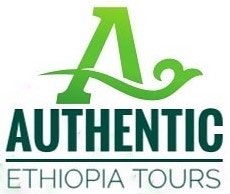


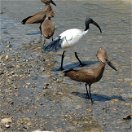






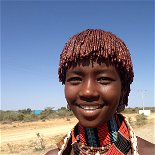
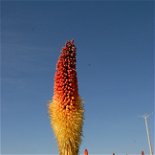
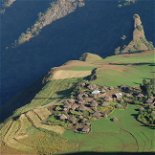


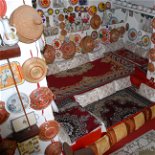
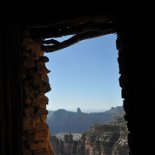

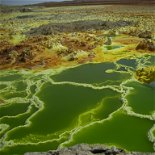


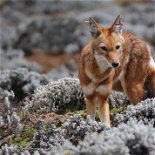
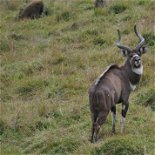
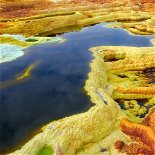
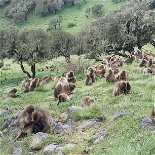
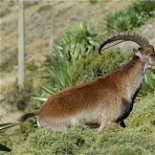
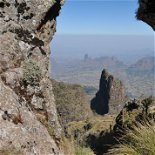
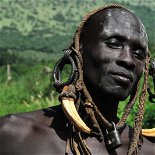
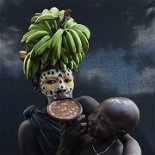

Share This Page